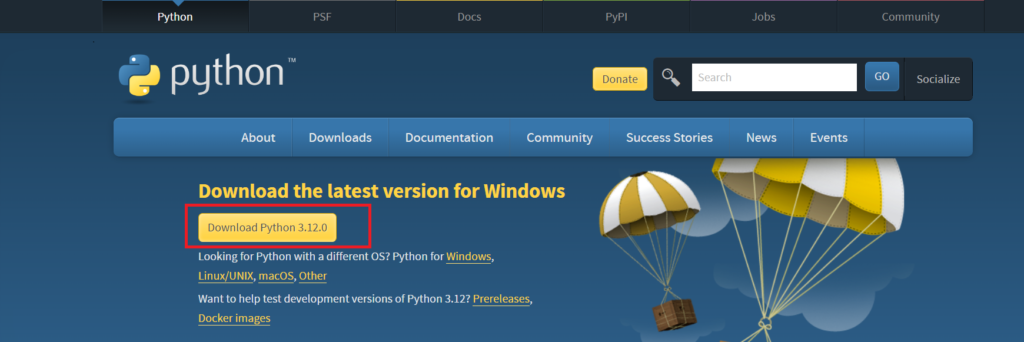Follow the below steps to install Python on your device. We have different steps based on Operating Systems(Windows, Linus, Mac)
Install Python on Windows:
- Download Python from below official site below. Visit the official Python website at https://www.python.org/downloads/.

- On the front page, you should see a prominent download button for the latest version of Python 3. x. Click on it.
- Run the Installer. Once the installer is downloaded, double-click on the installer executable file (e.g., python-3.x.x.exe).
- Configure Installation . Check the box that says “Add Python x.x to PATH.” This is important to make Python easily accessible from the command line. You can customize the installation by clicking on “Customize installation,” but the default settings are usually sufficient for most users.
- Install Python. Click the “Install Now” button. The installer will now install Python on your computer.
- Verification. To ensure Python is installed correctly, open the Command Prompt and type Python. You should see the Python interpreter open with information about your Python version.
Install Python on Linux (Ubuntu/Debian):
- Open Terminal. Open a terminal window.
- Update Package List. Run the below commands to update the package list in Python:
sudo apt update- Install Python. Install Python 3 with the following command:
sudo apt install python3- Verification. To ensure Python is installed correctly, you can run python3 in the terminal. You should see the Python interpreter open with information about your Python version.
Install Python on macOS:
- Terminal:
- Python is usually pre-installed on macOS. Open the Terminal application
- Check Python Version:
- In the Terminal, type python3 to open the Python interpreter. You should see information about your Python version.
- Optional: You can also install Python using a package manager like Homebrew. If you prefer this method, you can follow Homebrew’s installation instructions first, and then use Homebrew to install Python with the command brew install python.
These are basic instructions for installing Python on different operating systems. Depending on your needs, you may also want to explore virtual environments and package managers like Pip to manage Python packages and environments for your projects.


3 thoughts on “How to Install Python”